The Dawlish Chronicles Blog, 2018
Fourteen Personal Favourites
The Dawlish Chronicles blog appeared through the year 2018, two articles most weeks, a total of some ninety which together represent as much as an average book. This was run in parallel with the writing of the Dawlish Chronicles novels – the latest of which, Britannia’s Mission, was published in late November, as well as a new free short-story for those who have signed up for my mailing list (details at the end of this article).
The entire blog list for 2018 can be accessed by clicking here
I’ve picked out fourteen of my favourites from the year and if you’ve missed any I hope you’ll enjoy them. They cover a very wide range of (usually) naval-associated topics in the period from 1700 to the early 20th century so there’s probably at least one here that you’ll find of interest!
HMS Emerald at Viveiro, 1808
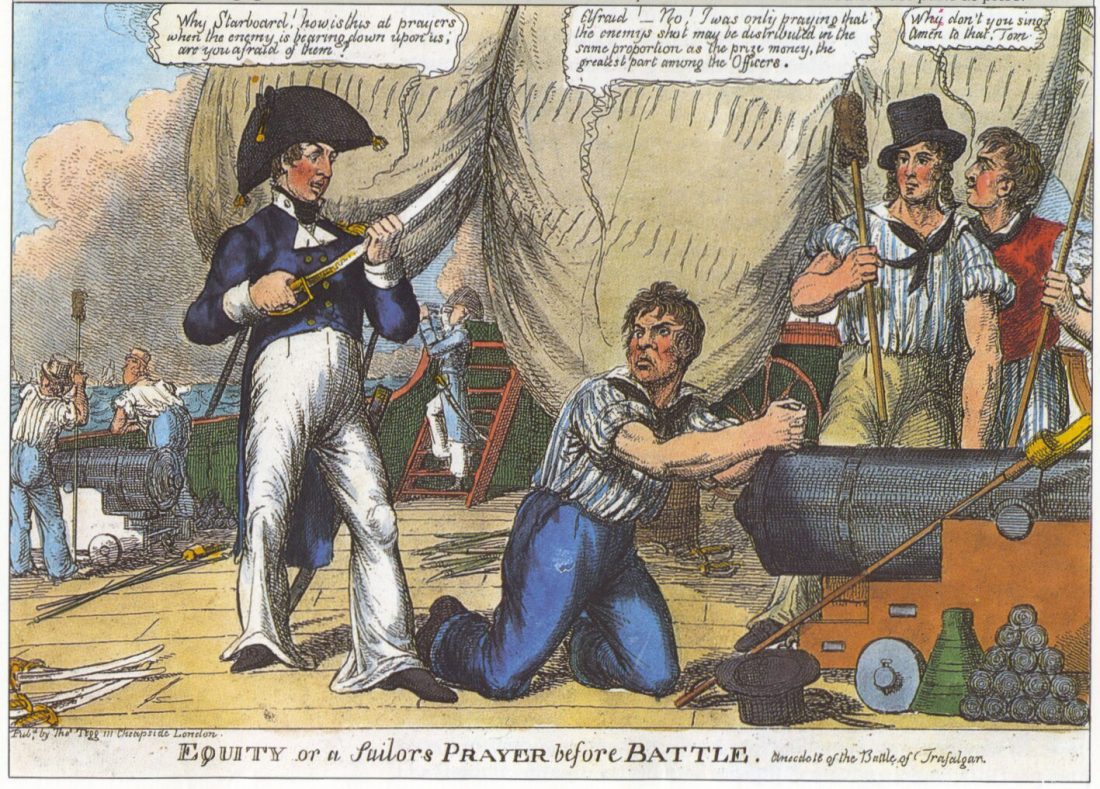
“Cutting-out” was a desperate class of operation in which the Royal Navy acquired vast proficiency in the Revolutionary and Napoleonic Wars period. This involved boatloads of sailors and marines capturing enemy shipping from protected anchorages, usually in darkness, and often involved storming of coastal fortifications. Here’s a classic example from 1808 – HMS Emerald at Vimeiro, Northern Spain.
A Sultan, a Queen and a Salvage, 1889
 It’s hard to imagine a sequence of events that links an Ottoman Sultan, Queen Victoria, the Royal Navy of 1889, an innovative epic of marine salvage and an 1870s warship which served in various capacities until the end of the Second World War. The link is however the ironclad HMS Sultan, built between 1870 and 1876.
It’s hard to imagine a sequence of events that links an Ottoman Sultan, Queen Victoria, the Royal Navy of 1889, an innovative epic of marine salvage and an 1870s warship which served in various capacities until the end of the Second World War. The link is however the ironclad HMS Sultan, built between 1870 and 1876.
Click here to learn more about this unlikely linkage of events…
Fighting the Riff Pirates 1848-51
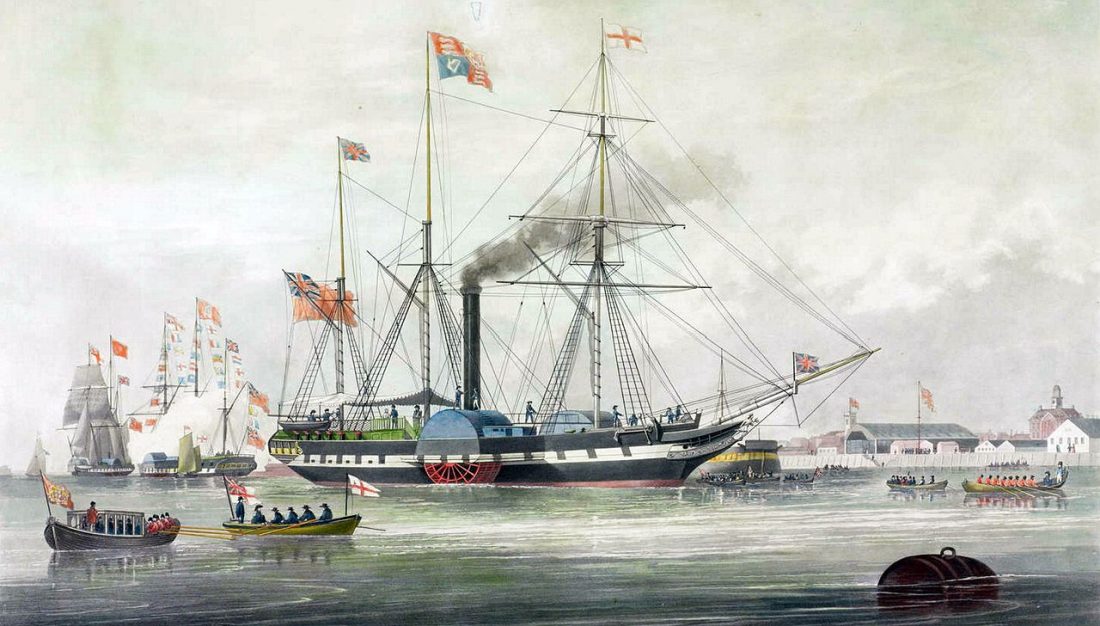 As late as the mid-nineteenth century merchant shipping was still being captured by Barbary pirates off the Riff coast of Morocco. Daring rescue and retaliation efforts by the Royal Navy in 1848 and 1851 depended on use of paddle sloops, then a new type of warship.
As late as the mid-nineteenth century merchant shipping was still being captured by Barbary pirates off the Riff coast of Morocco. Daring rescue and retaliation efforts by the Royal Navy in 1848 and 1851 depended on use of paddle sloops, then a new type of warship.
Click here to read about these actions
James Brooke – the First White Rajah of Sarawak
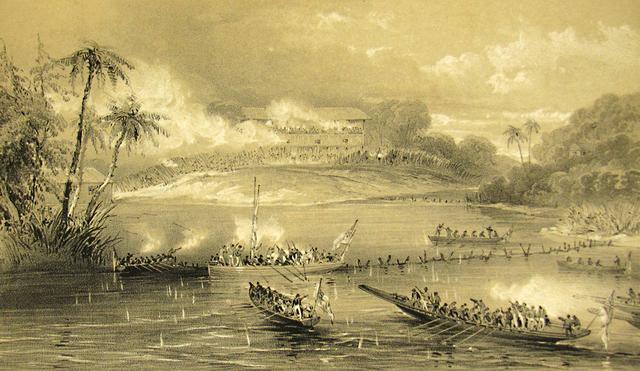 An Englishman who ruled like an Oriental potentate, pirates, head-hunters, Robbie Burns’ grandson, Jane Austen’s brother, desperate battles on land, sea and swamp – how can all these be linked? Sir James Brooke (1803 – 1868). was one of the most intrepid and colourful figures of the 19th Century. He founded modern Sarawak, governed it as monarch of an independent kingdom, and established a dynasty of “White Rajahs” who were to continue to rule until 1946.
An Englishman who ruled like an Oriental potentate, pirates, head-hunters, Robbie Burns’ grandson, Jane Austen’s brother, desperate battles on land, sea and swamp – how can all these be linked? Sir James Brooke (1803 – 1868). was one of the most intrepid and colourful figures of the 19th Century. He founded modern Sarawak, governed it as monarch of an independent kingdom, and established a dynasty of “White Rajahs” who were to continue to rule until 1946.
Click on the here to learn about the unlikely career of this quintessential romantic hero
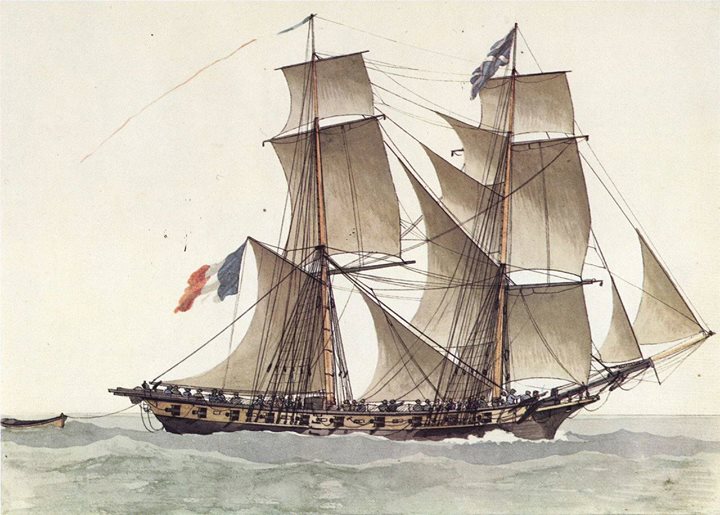 HMS Transfer: cold-blooded courage and service under four flags
HMS Transfer: cold-blooded courage and service under four flags
Few warships can have sailed under the flags of four different nations and to have seen action each time in just eight years. This was however the distinction of a small French privateer, original built as a polacca, which was to see her most remarkable action as the Royal Navy’s brig-of-war HMS Transfer in 1799.
Click here to read about this vessel’s amazing career
Mutiny on the High Seas – The Gold Hunter, 1828
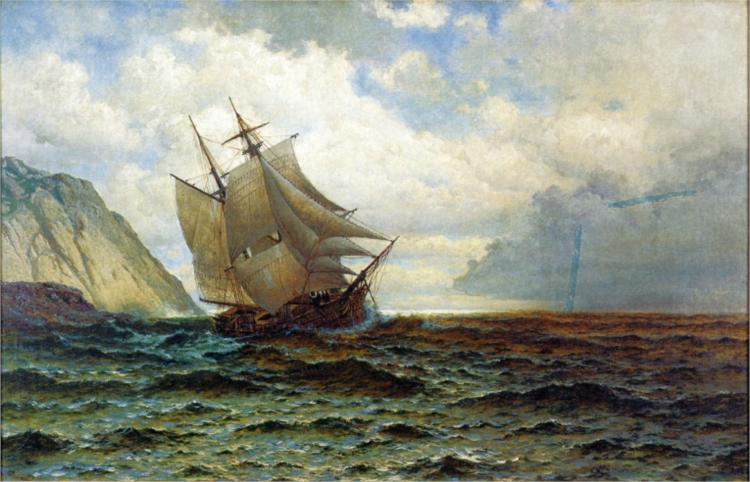 A packet vessel, en route from Britain to the United States, was threatened with takeover by a mutinous crew. But the ring leader had not however reckoned on the resolution and inventiveness of one of the passengers – who resorted to chemical warfare to bring the affair to a conclusion. This article draws on a splendidly florid account written some time later and quotes directly from some of the hilariously elaborate prose it contains.
A packet vessel, en route from Britain to the United States, was threatened with takeover by a mutinous crew. But the ring leader had not however reckoned on the resolution and inventiveness of one of the passengers – who resorted to chemical warfare to bring the affair to a conclusion. This article draws on a splendidly florid account written some time later and quotes directly from some of the hilariously elaborate prose it contains.
Click here to read about this remarkable incident
The Loss of the troopship Aeneas, 1805
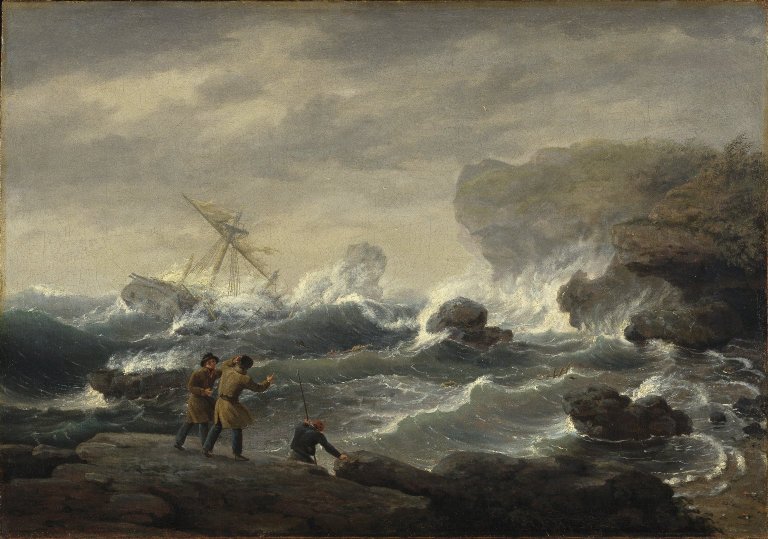 When the dangers of war at sea during the Great Age of Fighting Sail, one tends to think primarily in terms of pitched battles. But though battle was infrequent, storms were a constant, with shipwreck an all too common occurrence. The suffering of the survivors did not necessarily end when land was gained however. This was illustrated by the aftermath of the wrecking, with heavy loss of life, of the British troopship Aeneas off Newfoundland in 1805. What followed was to be an epic of human endurance.
When the dangers of war at sea during the Great Age of Fighting Sail, one tends to think primarily in terms of pitched battles. But though battle was infrequent, storms were a constant, with shipwreck an all too common occurrence. The suffering of the survivors did not necessarily end when land was gained however. This was illustrated by the aftermath of the wrecking, with heavy loss of life, of the British troopship Aeneas off Newfoundland in 1805. What followed was to be an epic of human endurance.
Click here to read about the survivors’ ordeal
The Sinking of HMS Goliath 13th May 1915
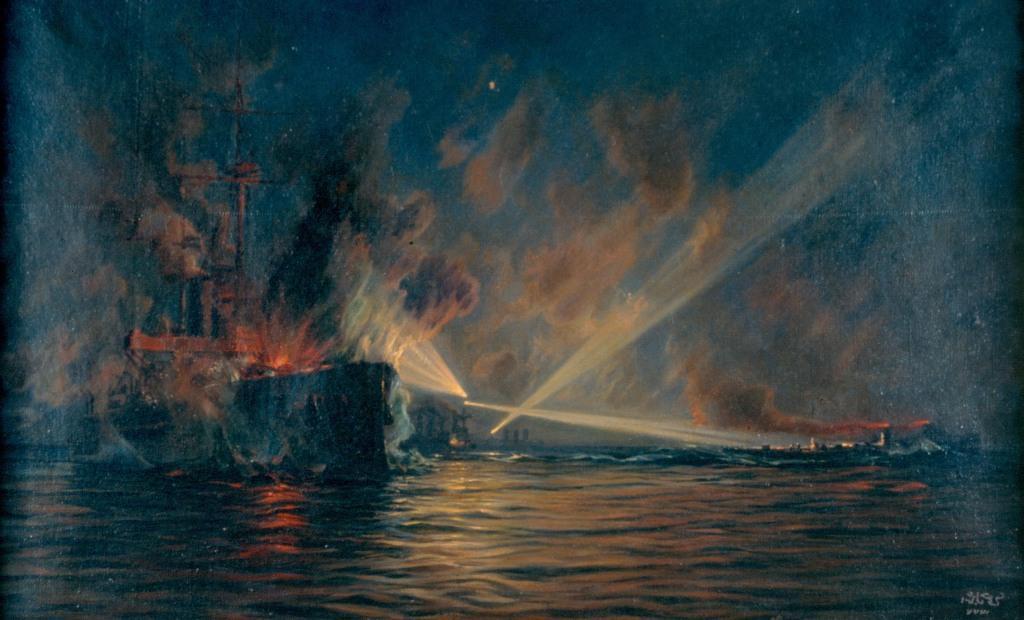 The world’s battleships were made obsolete overnight in 1905 when the revolutionary HMS Dreadnought entered service. Henceforth these dinosaurs were to be known as “pre-dreadnoughts” and many of them were allocated to the ill-starred Gallipoli operation in 1915. There, they, and their crews, were to pay a high price. One such was HMS Goliath…
The world’s battleships were made obsolete overnight in 1905 when the revolutionary HMS Dreadnought entered service. Henceforth these dinosaurs were to be known as “pre-dreadnoughts” and many of them were allocated to the ill-starred Gallipoli operation in 1915. There, they, and their crews, were to pay a high price. One such was HMS Goliath…
Click here to read about a brilliant attack and an appalling tragedy
Routine on a Royal Navy warship, late-19th Century
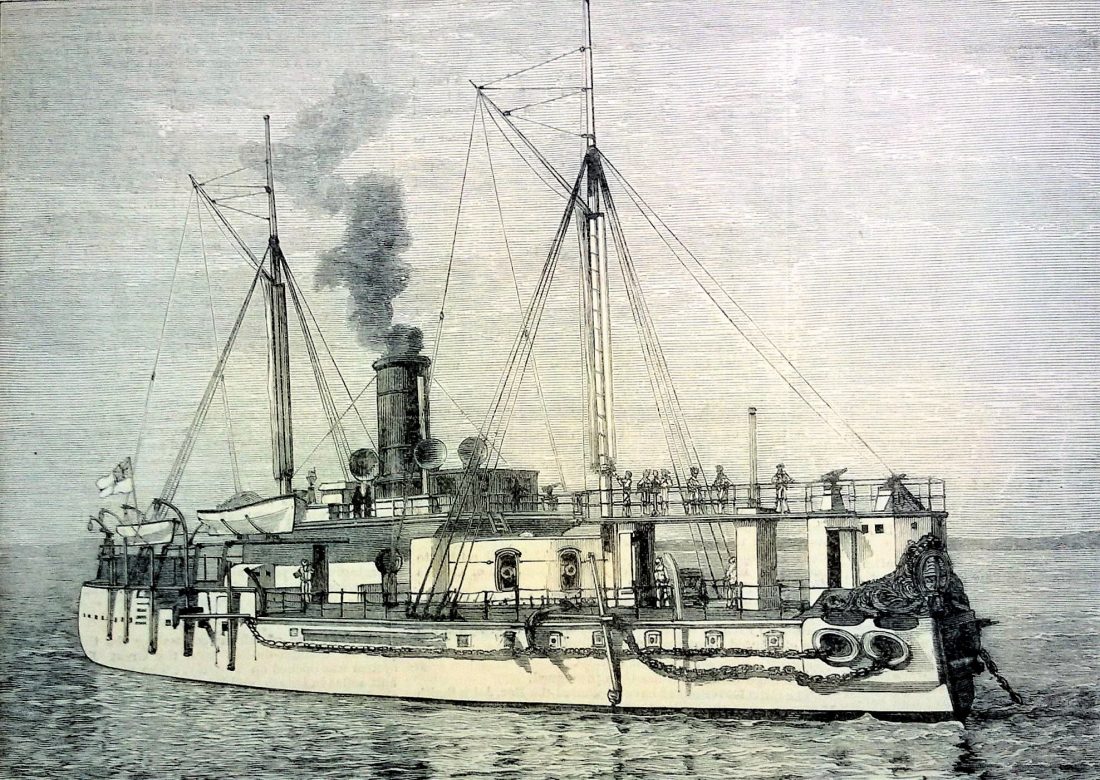 Information on the daily routines in the Royal Navy in the late 19th Century is not easy to come by but a book published by a naval chaplain in 1901 provides insights to the relentless training regimes followed. It also gives a glimpse, shocking to modern sensibilities, of the callous attitudes to outsiders which could be considered acceptable at the time even by a clergyman.
Information on the daily routines in the Royal Navy in the late 19th Century is not easy to come by but a book published by a naval chaplain in 1901 provides insights to the relentless training regimes followed. It also gives a glimpse, shocking to modern sensibilities, of the callous attitudes to outsiders which could be considered acceptable at the time even by a clergyman.
Click here to read the article
The Epic of Diamond Rock 1804-05
 The Stone Sloop: In 1804-05, off French-held Martinique, a towering pinnacle of rock, no more than three-hundred yards diameter and 570 feet high, became the scene of one of the most spectacular exploits ever of the Royal Navy. British fortification of the rock was an epic in itself, demanding that heavy guns be hoisted up from the sea over near-vertical cliffs. Rated as a sloop – HMS Diamond Rock – it held out for seventeen months despite shortages of food, ammunition and, above all, drinking water.
The Stone Sloop: In 1804-05, off French-held Martinique, a towering pinnacle of rock, no more than three-hundred yards diameter and 570 feet high, became the scene of one of the most spectacular exploits ever of the Royal Navy. British fortification of the rock was an epic in itself, demanding that heavy guns be hoisted up from the sea over near-vertical cliffs. Rated as a sloop – HMS Diamond Rock – it held out for seventeen months despite shortages of food, ammunition and, above all, drinking water.
Click here to read about this amazing undertaking and its dramatic climax.
“Poor Jack Spratt” at Trafalgar, 21st October 1805
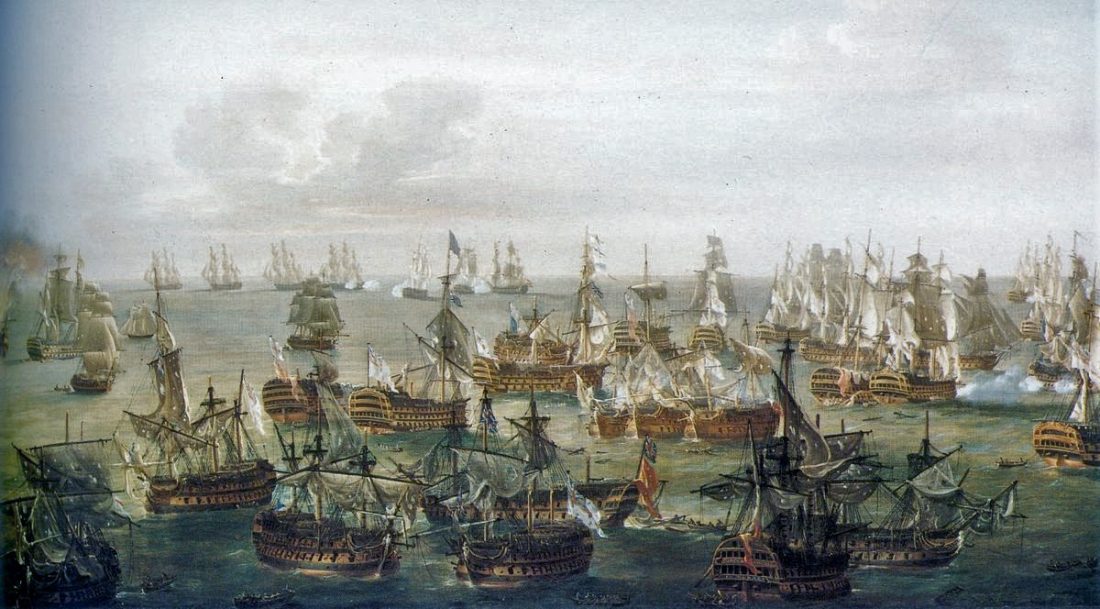 All-but-forgotten today, James “Jack” Spratt was one of the heroes of Trafalgar. With almost insane bravery he swam from HMS Defiance, cutlass in his teeth and boarding axe in his belt, to her French duelling opponent, the “74” Aigle, and boarded her alone. What followed was a person al combat of Homeric proportions.
All-but-forgotten today, James “Jack” Spratt was one of the heroes of Trafalgar. With almost insane bravery he swam from HMS Defiance, cutlass in his teeth and boarding axe in his belt, to her French duelling opponent, the “74” Aigle, and boarded her alone. What followed was a person al combat of Homeric proportions.
Click here to read about this iron man
One Submarine, Two Flags and Two Heroes 1914-18
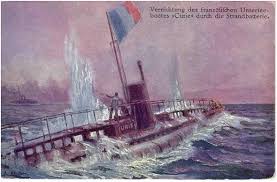 In December 1914, in one of the most daring exploits of World War 1, a dashing French Lieutenant named Gabriel O’Byrne took his submarine, the Curie, into the heart of the Austro-Hungarian naval base at Pola. What was to follow was not only dramatic – and tragic – but was to be the prelude to a new career for the Curie under new management. She was to be commanded by one of the war’s most notable U-Boat aces who to have an even more unlikely career still ahead of him.
In December 1914, in one of the most daring exploits of World War 1, a dashing French Lieutenant named Gabriel O’Byrne took his submarine, the Curie, into the heart of the Austro-Hungarian naval base at Pola. What was to follow was not only dramatic – and tragic – but was to be the prelude to a new career for the Curie under new management. She was to be commanded by one of the war’s most notable U-Boat aces who to have an even more unlikely career still ahead of him.
Click here to read the remarkable story of the Curie/U-14
The Crimean War – Bombardment of Odessa 1854
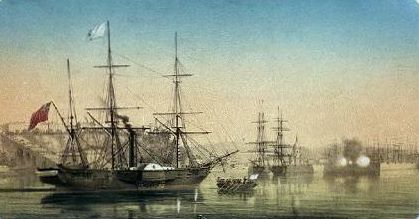 The Crimean War (1854-56), in which Britain, France, Turkey and Piedmont took on Russia, is generally thought of in terms of the operations in the Crimea itself. Prior to the landing of the large Allied invasion force there in September 1854 there was however an earlier – and significant – naval action. This was the bombardment of the Russian Black Sea port of Odessa in April 1854. It was carried out by a combined British-French force and though it initially had a superficial quality of “an affair of honour” it was to have powerful strategic implications.
The Crimean War (1854-56), in which Britain, France, Turkey and Piedmont took on Russia, is generally thought of in terms of the operations in the Crimea itself. Prior to the landing of the large Allied invasion force there in September 1854 there was however an earlier – and significant – naval action. This was the bombardment of the Russian Black Sea port of Odessa in April 1854. It was carried out by a combined British-French force and though it initially had a superficial quality of “an affair of honour” it was to have powerful strategic implications.
Click here to read of this first British and French naval action of the Crimean War
HMS Britannia and HMS Ascot, the Royal Navy’s last losses of WW1
 In the year when the 100th anniversary of World War 1 was commemorated it’s appropriate to detail the Royal Navy’s last losses of teh war proper, HMS Britannia and HMS Ascot, in the two days before an armistice ended the war on November 11th 1918. The human cost of both these tragedies was very high, and all the more so due to cessation of hostilities being imminent.
In the year when the 100th anniversary of World War 1 was commemorated it’s appropriate to detail the Royal Navy’s last losses of teh war proper, HMS Britannia and HMS Ascot, in the two days before an armistice ended the war on November 11th 1918. The human cost of both these tragedies was very high, and all the more so due to cessation of hostilities being imminent.
Click here to read about this last, sad, closure
Do you enjoy naval fiction?
Looking for reading over the holiday period?
If you’re a Kindle Unlimited subscriber you can read any of the seven Dawlish Chronicles novels without further charge. They are also available for purchase on Kindle or as stylish 9 X 6 paperbacks.
Click on the banner below for more details:
Click here for an 8-minute video in which Antoine Vanner talks about Britannia’s Mission
Extracts from recent readers’ reviews on Amazon.com:
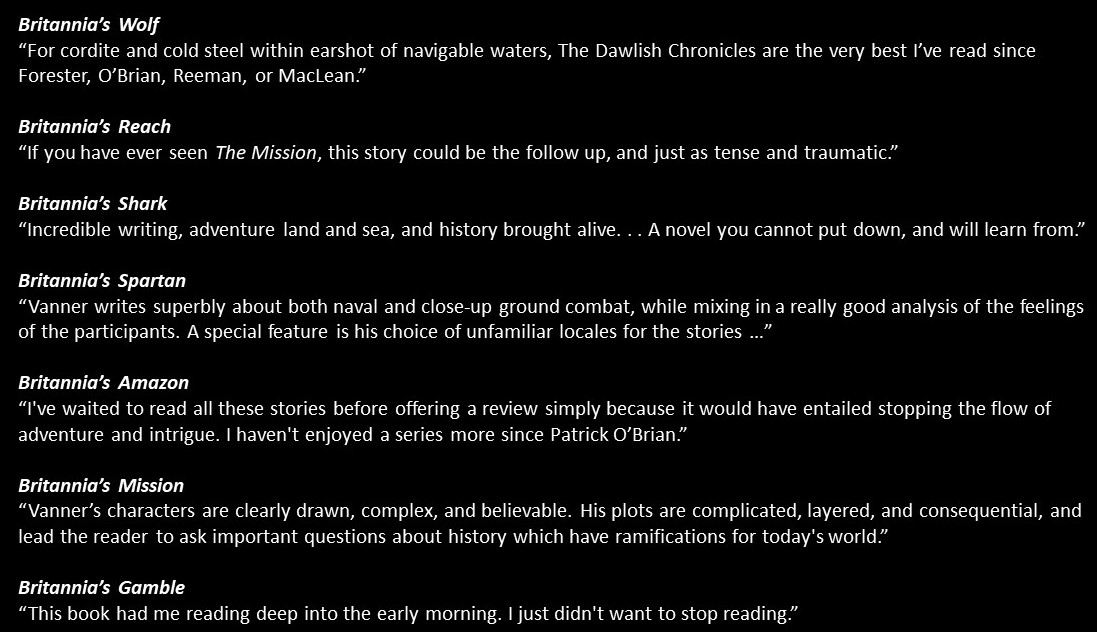
Registering for the Dawlish Chronicles mailing list by clicking on any of the cover images below, will keep you updated on new books. You will also receive five free short stories for downloading on your computer, tablet or Kindle.


